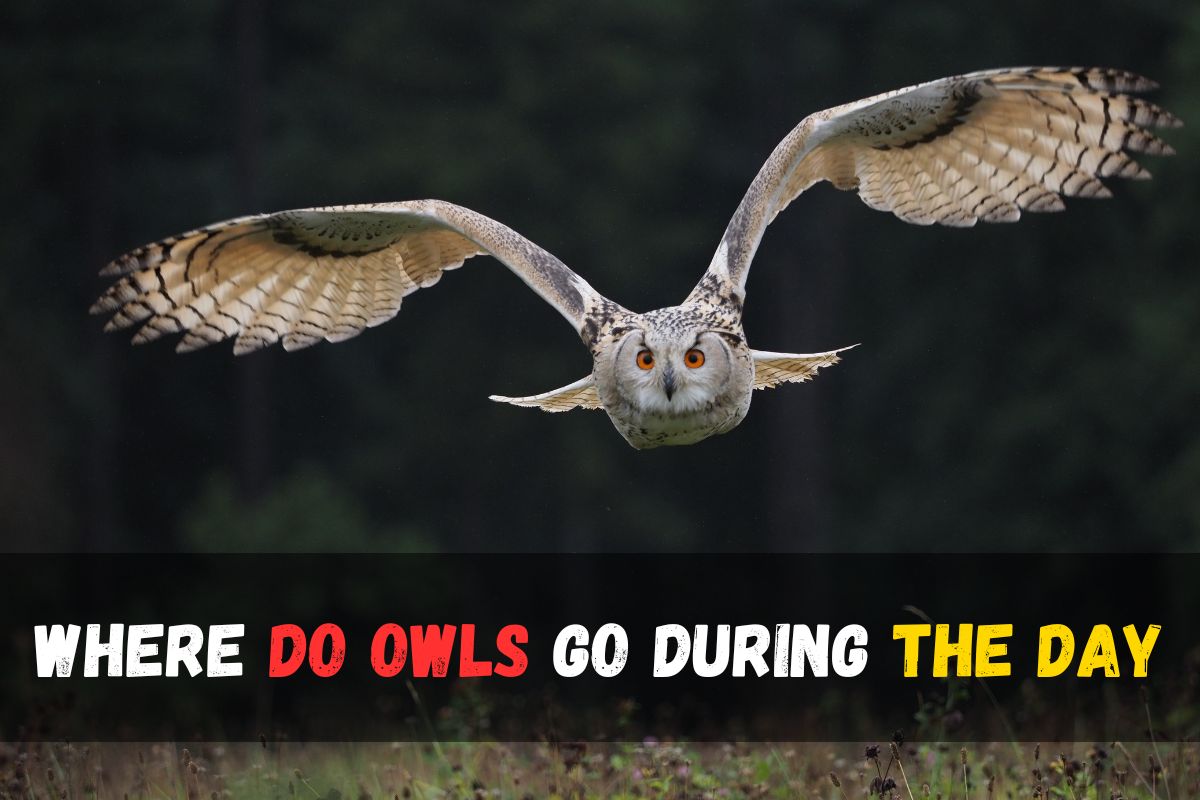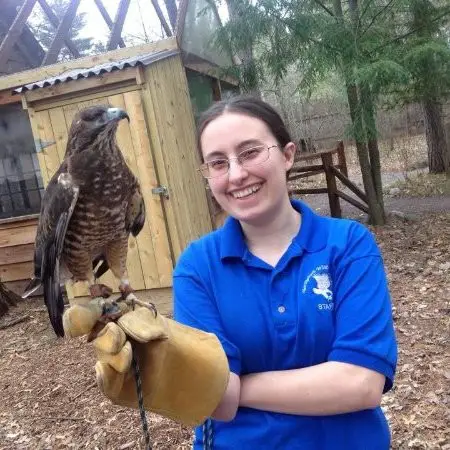Owls, with their silent flight and piercing gaze, have long captured the fascination of humans. Their mysterious nocturnal habits, coupled with their enigmatic presence in folklore and mythology, have made them symbols of wisdom, magic, and the unknown. Unlike diurnal birds of prey, such as eagles and hawks, They are predominantly active during the night, employing their keen senses to hunt under the cover of darkness. Their specialized adaptations, including asymmetrical ears and facial disks, aid in locating prey in low-light conditions, further adding to their mystique.
Are Owls Mammals?
Where Do Owls Go During The Day
Owls often leave us wondering about their whereabouts when the sun is high in the sky. During daylight hours, these mysterious creatures adopt various strategies to cope with the challenges of diurnal life. While some of them choose to retreat to secluded roosting spots, others remain hidden in plain sight, camouflaged amidst dense foliage, or tucked away within the safety of tree hollows.
Additionally, certain owl species may engage in brief periods of activity, such as preening their feathers or scouting for potential prey. They exhibit fascinating adaptations that allow them to thrive in both the darkness of night and the brightness of day. Understanding the daytime behaviors provides a glimpse into the intricate lives of these remarkable birds and deepens our appreciation for their resilience in the face of changing environmental conditions.
Do Owls Eat Squirrels?
What do owls do during the daytime?
While the nocturnal activities of owls are well-documented, their whereabouts and behavior during the daytime remain a subject of curiosity and speculation. Observers often wonder where these elusive creatures retreat to once the sun rises, and what activities occupy their daylight hours. Despite their reputation as creatures of the night, they do not simply vanish with the dawn, prompting further exploration into their diurnal behavior.
How do owls sleep?
Owls exhibit fascinating sleeping behaviors tailored to their age and physiological needs. Adult owls typically snooze in an upright perched position, leveraging their sharp talons and robust feet to securely cling to a branch or perch. This stance not only aids in maintaining balance but also facilitates swift flight responses if threatened.
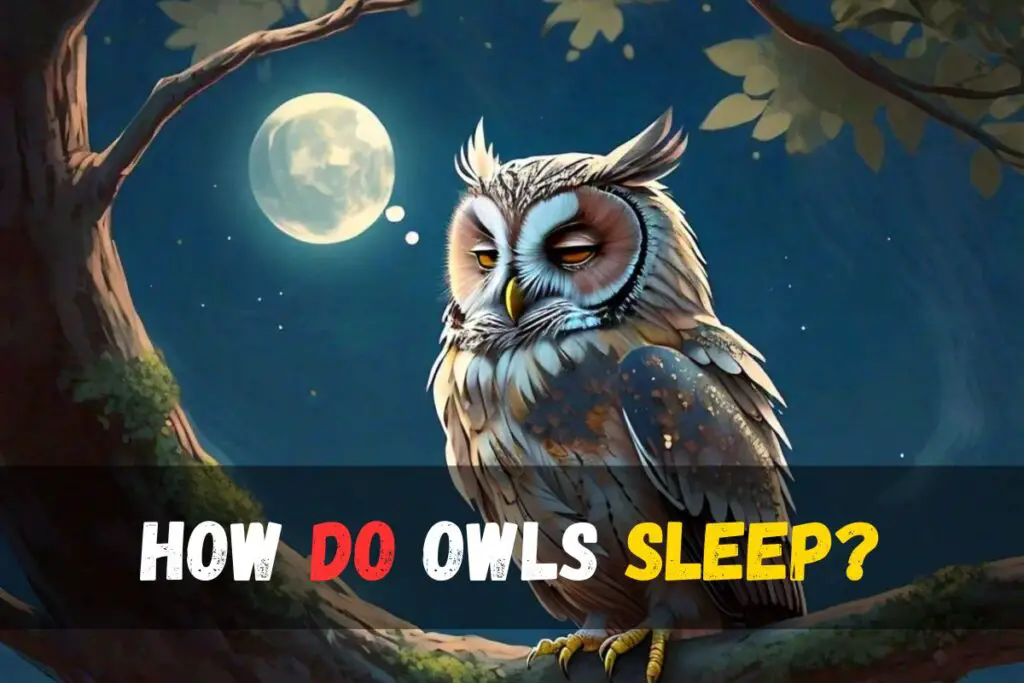
In contrast, young owls, still in the phase of muscle development, often opt for a more relaxed posture, sleeping while lying down. This allows them to rest their growing muscles comfortably, either on a flat surface like a nest or by grasping onto a branch for added safety.
Regardless of age, they commonly shut their eyes during slumber, a protective measure against harsh light that also conceals the vivid colors of their eyes from potential predators. Remarkably, even during deep sleep, they retain a heightened level of alertness, poised to take flight at the faintest indication of danger.
When do owls sleep?
Owls, like many birds, are primarily known as nocturnal creatures, meaning they are most active during the night. However, their sleep patterns can vary. While most owls do indeed sleep during the day, some species exhibit more flexibility with their bedtimes. They can often be observed hunting in the early morning and late afternoon. Surprisingly, there are even certain owl species classified as diurnal, indicating that they primarily sleep at night. Therefore, the sleeping habits of owls are not strictly nocturnal, with some displaying adaptability to different times of the day for rest.

How Long Are Owls Legs?
How long do owls sleep at night?
Owl sleep duration varies depending on factors such as species, age, and environmental conditions. On average, adult owls spend approximately 6 to 8 hours asleep during the night. However, this sleep pattern can be quite flexible, with some owls exhibiting periods of wakefulness interspersed throughout the night. Additionally, certain owl species, such as the Northern Hawk Owl, may be more active during twilight hours, leading to shorter periods of sleep at night. Overall, while owls are primarily active at night, the exact duration of their sleep can vary based on individual characteristics and environmental factors.
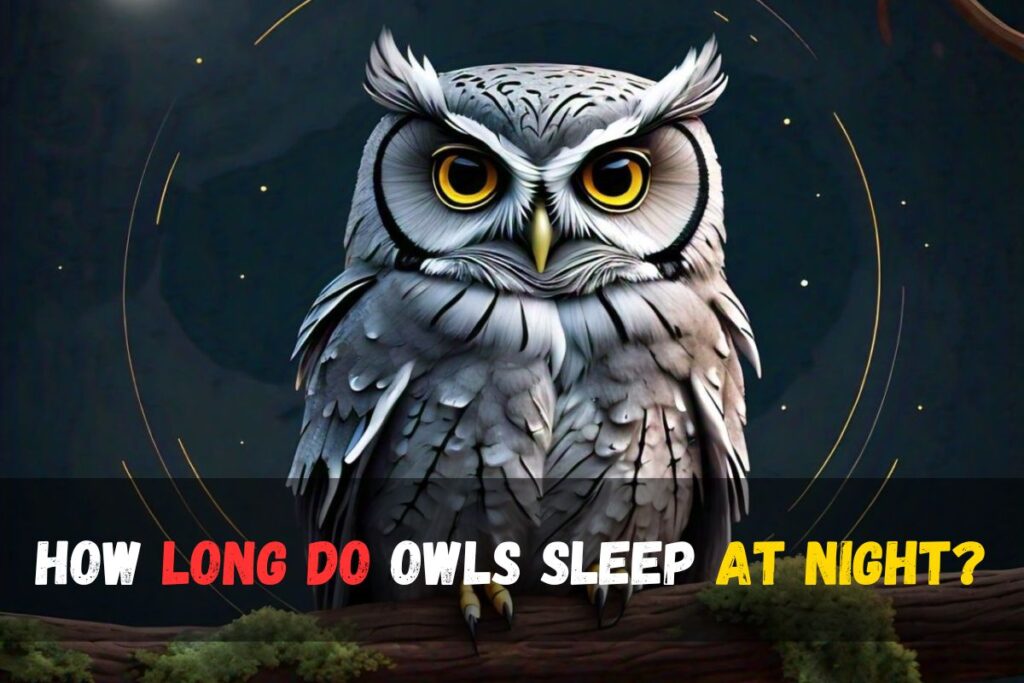
Where do owls sleep in the winter?
During the winter months, owls employ various strategies to ensure their survival in cold and harsh conditions. One common shelter for owls during winter is dense vegetation, such as evergreen trees or thick shrubbery, which provides both insulation from the cold and protection from predators. Additionally, they may seek refuge in natural cavities, tree hollows, or abandoned nests to escape the elements. Some owl species, like the snowy owl, are well-adapted to snowy environments and may even burrow into snowbanks to create cozy roosting spots. In urban areas, they may also utilize man-made structures such as barns, abandoned buildings, or even nesting boxes provided by conservation efforts. Regardless of their chosen habitat, owls prioritize warmth, safety, and concealment while sleeping during the winter months, ensuring their survival until the arrival of spring.
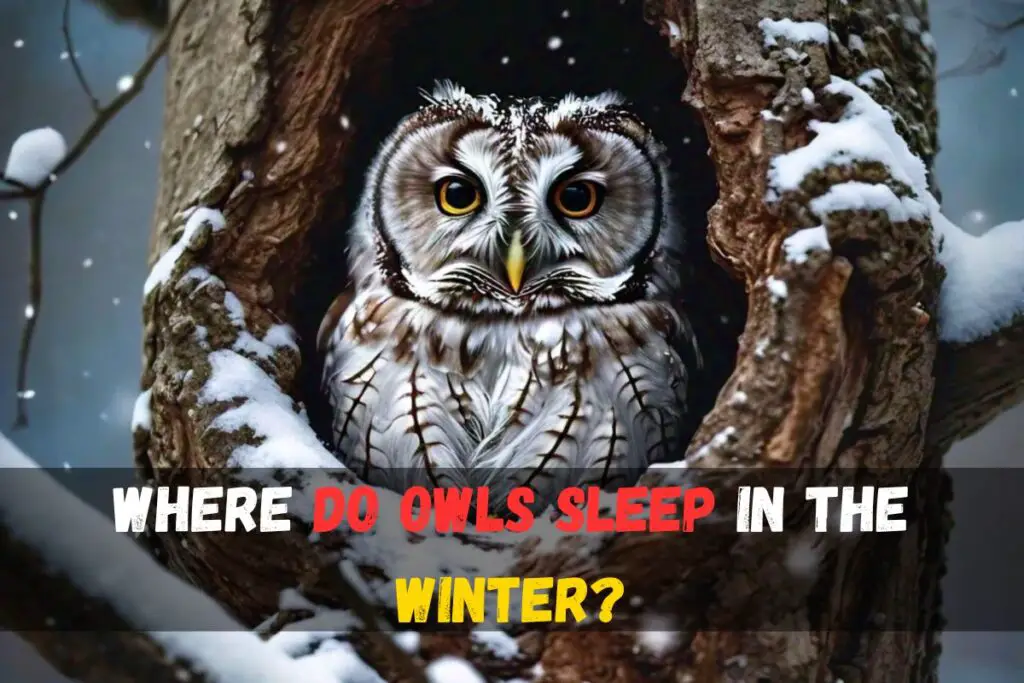
Do Owls Mate for Life?
Where do baby owls sleep?
Baby owls, also known as owlets, have specific nesting requirements for their safety and development. Typically, owls construct nests in a variety of locations, including tree hollows, dense foliage, or even abandoned structures. The nest provides a secure environment where the owlets can rest and grow under the watchful eye of their parents. The precise location of the nest depends on the owl species and the availability of suitable habitat. Some species, like barn owls, may nest in barns, while others, like great horned owls, may use old nests built by other birds. Regardless of the location, baby owls rely on the nest for protection from predators and the elements during their vulnerable early stages of life. As they grow older and become more independent, owlets may venture out of the nest to explore their surroundings and practice hunting skills under the guidance of their parents.

Where do owls sleep when it rains?
When rain falls, owls seek shelter to protect themselves from getting wet and to maintain their feathers’ insulating properties. They typically retreat to covered areas such as dense foliage, thick tree branches, or the sheltered side of tree trunks. Additionally, owls may utilize natural shelters like tree hollows, caves, or rocky crevices to stay dry during rainfall. These sheltered spots offer protection from the rain and help owls conserve body heat, ensuring their comfort and well-being during inclement weather. By seeking refuge in suitable hiding places, owls can wait out the rain until conditions improve and they can resume their nocturnal activities.
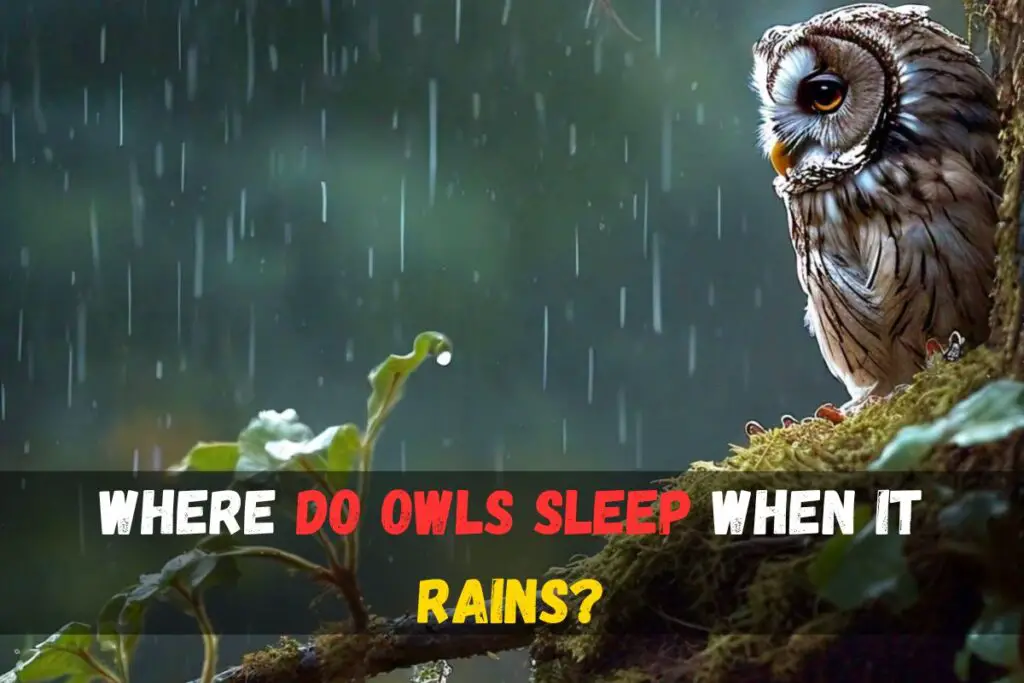
Do Owls Attack Humans?
Do owls sleep in groups?
Owls are generally solitary creatures, and their sleeping habits reflect this solitary nature. While some owl species may roost in loose aggregations during the non-breeding season, they typically sleep alone or in small family groups during the breeding season. Each owl usually maintains its own territory and roosting site, which it defends from other owls and potential predators. However, there are exceptions to this rule. Some owl species, such as the burrowing owl, may form communal roosts where several individuals gather together in shared burrows for protection and warmth. These communal roosts are more common in species that inhabit open habitats where suitable nesting and roosting sites are limited. Overall, while owls generally prefer solitary sleeping arrangements, certain species may exhibit communal roosting behavior under specific circumstances.

Do owls sleep with one eye open?
Yes, owls have a unique ability to sleep with one eye open, known as unilateral eye closure. This remarkable adaptation allows them to remain vigilant and aware of their surroundings even while resting. By keeping one eye open, owls can quickly detect potential threats or prey movements, ensuring their safety and survival during vulnerable periods of rest. Additionally, the ability to sleep with one eye open enables them to maintain awareness of their environment without fully interrupting their sleep cycles. This behavior is especially crucial for nocturnal predators like owls, who must remain alert to hunt effectively and avoid becoming prey themselves. Therefore, sleeping with one eye open is a valuable adaptation that contributes to the owls’ success as skilled hunters and masters of the night.
Are Owls the Smartest?
Do Owls Sleep On Their Stomach
No, owls do not typically sleep on their stomachs. Instead, they usually sleep in a more upright position, perched on tree branches, ledges, or other elevated surfaces. This upright posture allows owls to quickly take flight if necessary and provides them with a clear vantage point to scan their surroundings for potential threats or prey. Additionally, sleeping in an upright position helps owls conserve energy and maintain their balance while resting. While they may occasionally lie down or hunker down in certain situations, such as during extreme weather or when caring for young chicks, sleeping on their stomachs is not a common behavior for these birds.
Are All Owls Nocturnal?
While many owl species are primarily nocturnal, not all owls adhere strictly to a nocturnal lifestyle. Some owl species, such as the Northern Hawk Owl and the Northern Pygmy Owl, are crepuscular, meaning they are most active during the twilight hours at dawn and dusk. They take advantage of the low light conditions during these times to hunt for prey.
Additionally, there are diurnal owl species, such as the Snowy Owl and the Burrowing Owl, that are active during the daytime. These owls have adapted to hunting in daylight and may be more commonly observed during the daytime hours, especially in open habitats.
FAQ’S
How do you find owls in the day?
Finding owls during the day can be challenging since they are primarily crepuscular creatures. However, several strategies can increase your chances of spotting owls during daylight hours:
- Research and local knowledge: Learn about the owl species that inhabit your area and their preferred habitats. Local birdwatching groups, nature centers, and wildlife experts can provide valuable information on where and when to look for owls.
- Explore suitable habitats: Owls are often found in wooded areas, forests, parks, and open landscapes with dense vegetation. Look for places with suitable roosting sites such as tree hollows, dense foliage, or abandoned buildings.
- Listen for vocalizations: Some owl species may vocalize during the day, especially during the breeding season. Familiarize yourself with the calls of local owl species and listen for vocalizations while exploring potential habitats.
- Scan tree branches and perches: Owls may roost in trees or on elevated perches during the day, blending in with their surroundings. Use binoculars or a spotting scope to carefully scan tree branches, especially near the trunk or in dense foliage, where owls may be concealed.
- Look for pellets and signs of activity: Owls regurgitate pellets containing indigestible parts of their prey, such as bones and fur. Finding owl pellets or other signs of owl activity, such as feathers or droppings, can indicate nearby owl presence.
- Be patient and observant: Spotting owls during the day often requires patience and keen observation. Take your time to thoroughly search potential habitats and use field craft techniques to minimize disturbance and maximize your chances of encountering owls.
Is it normal to see an owl during the day?
While many people associate owls with being strictly nocturnal, it’s important to note that some owl species are diurnal, meaning they are active during the day. They can adjust their sleep patterns according to the behavior of their prey. Therefore, it is indeed normal to see an owl during the day, especially if they have adapted to hunt when their prey is more active. This behavior highlights the versatility and adaptability of certain owl species in their quest for survival.
Do owls fly around during the day?
While most owl species are nocturnal, meaning they primarily hunt at night and sleep during the day, there are exceptions. Specifically, the Northern Hawk Owl and the Northern Pygmy Owl are diurnal, indicating they are active during the day. So, not all owls fly around during the day; it depends on the species. The majority of owl species are indeed nocturnal, but there are at least two species known to be active and fly during daylight hours.
Do owls sleep in the sun?
Owls, being nocturnal birds, are primarily active during the night. Consequently, they tend to sleep during the daylight hours and are less active during the day compared to their nighttime activities. As such, it’s unlikely for owls to sleep directly in the sun, as they typically seek sheltered spots during their daytime rest periods to avoid exposure to direct sunlight. Instead, they prefer shaded areas or hidden locations where they can rest undisturbed until nightfall when they become more active. Therefore, while owls may rest during the day, they usually do so in shaded or sheltered areas rather than basking in the sun.

